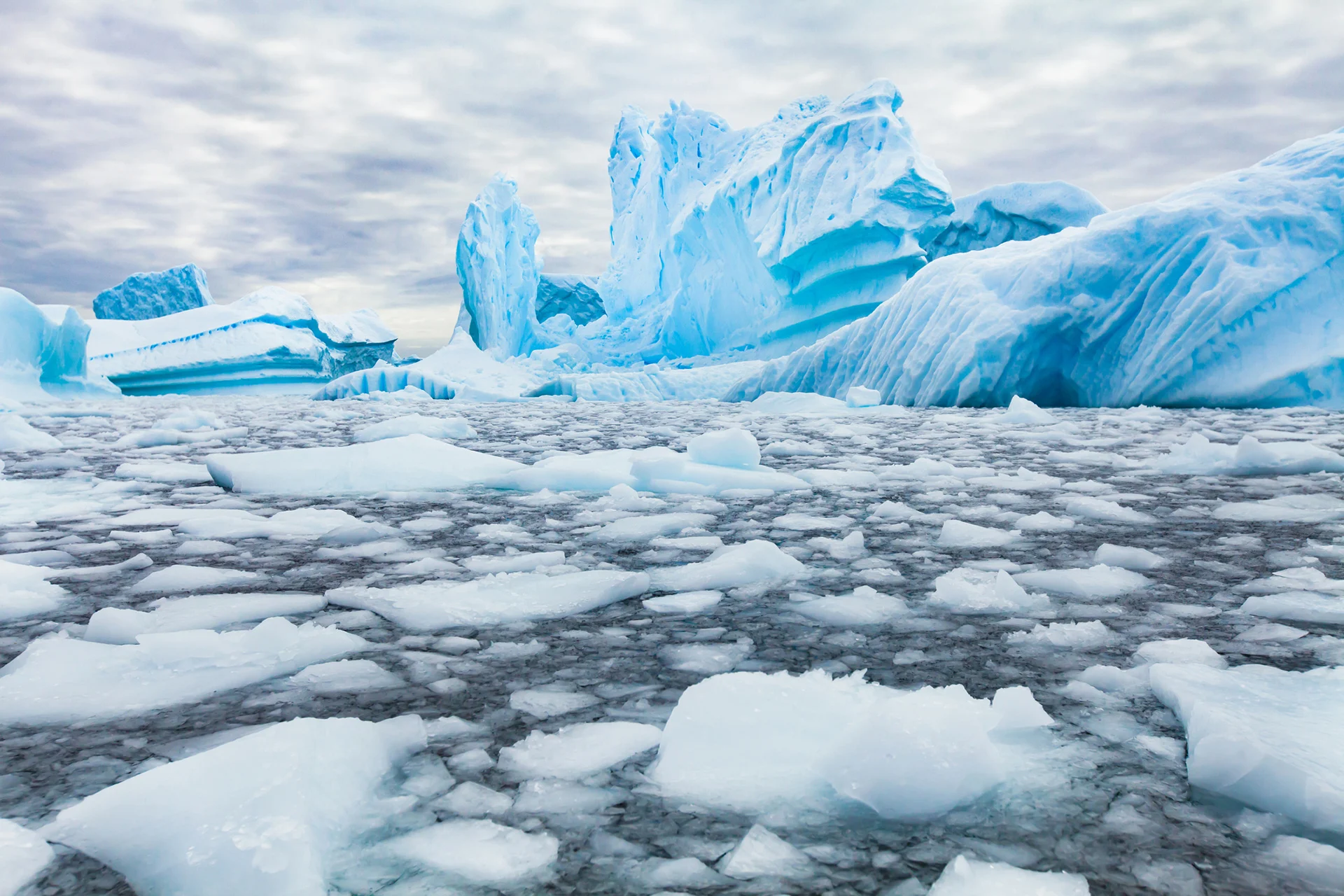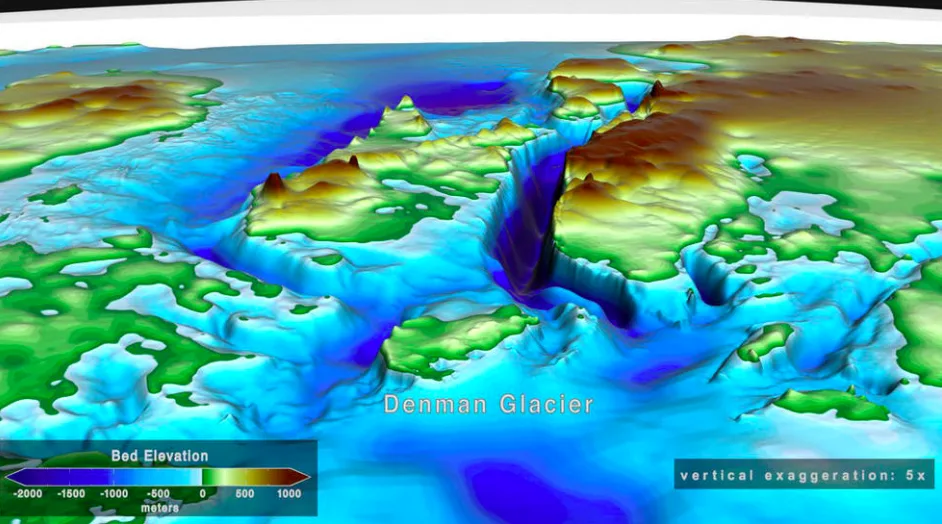
Earth's deepest canyon could be flooded by a massive melting glacier
Denman Canyon is the deepest point on continental Earth and is filled with glacial ice
Denman Canyon is located in East Antarctic and descends at least 3,400 metres below sea level, making it the deepest point on continental Earth. While several kilometres below the surface, it is entirely filled with ice that flows in from the Denman Glacier. A study finds that the melting Denman Glacier would not only threaten to flood this canyon, but it could cause global sea levels to rise by 1.5 m.
The researchers found over the past 20 years the Denman Glacier has retreated about 5.4 km across the vast canyon. In the absence of glacial ice coverage, relatively warm ocean water rushes into the canyon, creating a bath-like environment that further melts the glacier. The Denman Glacier faces climate change too, as global temperatures increase, so these melting effects are compounded.

This illustration shows a vertically exaggerated image of the ground under Denman Glacier in East Antarctica, including the canyon (blue area in the center). Credit: NASA’s Scientific Visualization Studio
Glaciers in Antarctica have been considered stable by researchers in the past, which was partly due to limited data and observations as well as insignificant melting rates in certain areas between 2000 and 2005. Satellite data that the researchers analyzed show that the Denman Glacier has lost 268 billion tons (2.43 metric tons) of ice between 1996 and 2018, which they say is an “above average” melt rate compared to other glaciers in Antarctica.
In addition to the unprecedented rate of melting ice, East Antarctica has seen record-breaking temperatures in 2020.
In addition to the unprecedented rate of melting ice, East Antarctica has seen record-breaking temperatures in 2020. This region is the coldest place on the planet and reached -98°C in 2013, however, the Casey research station in East Antarctica recorded its highest ever minimum and maximum temperatures between January 23 and 26 this year. A second recently published study reports that during the heatwave, temperatures reached a maximum of 9.2°C and a minimum of 2.5°C at Casey Station.
Even though there are thousands of kilometres between East and West Antarctica, researchers in the western regions also recorded record-breaking temperatures just days after the reports from Casey Station. The World Meteorological Organization reported a new temperature record of 18.4°C in Esperanza, West Antarctica, which was then followed by reports from the nearby Seymour Island that they reached a shocking 20.75°C on February 9 this year.
Top Photo Credit: Getty Images












